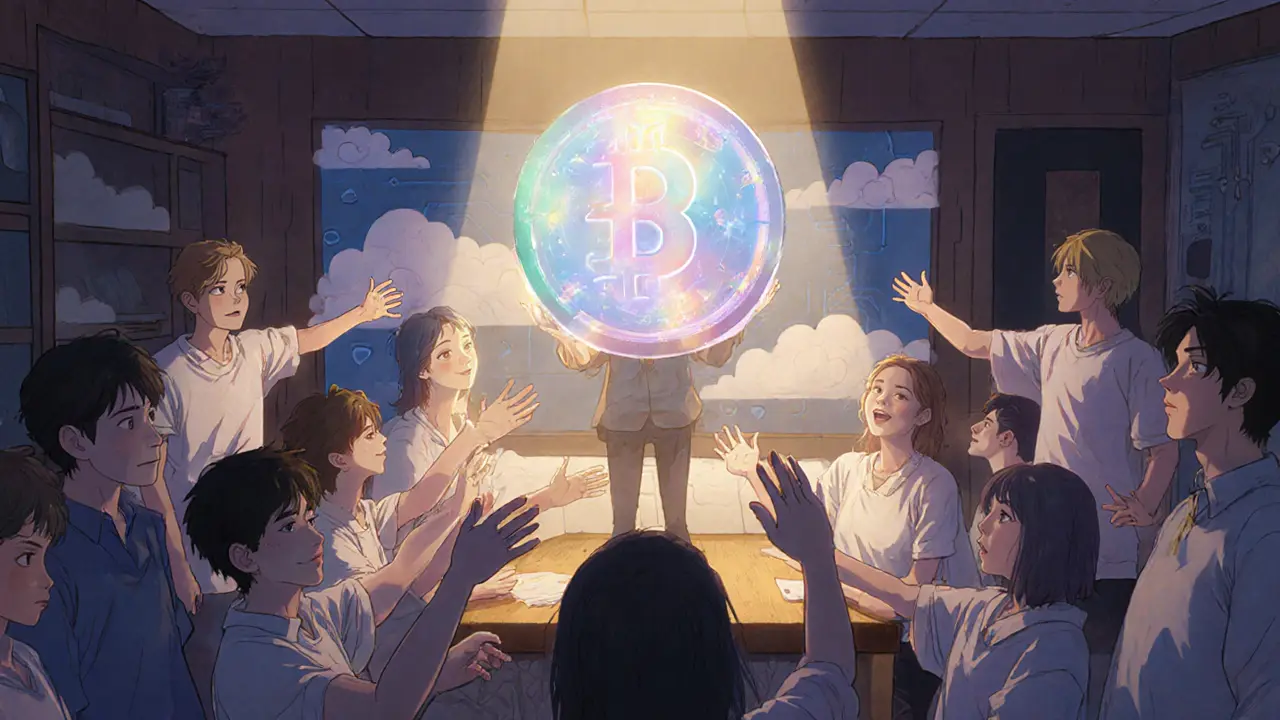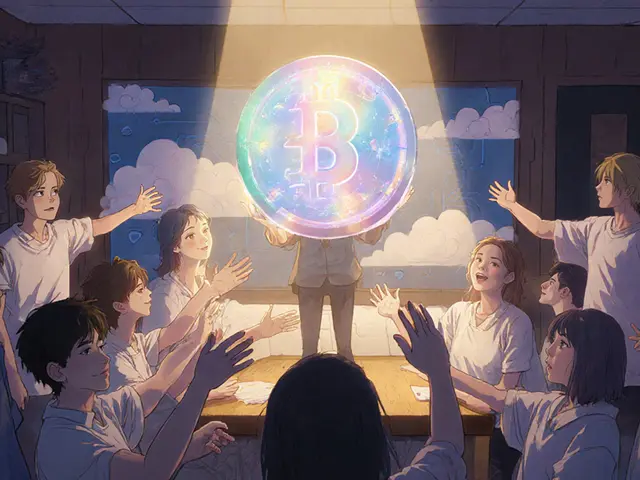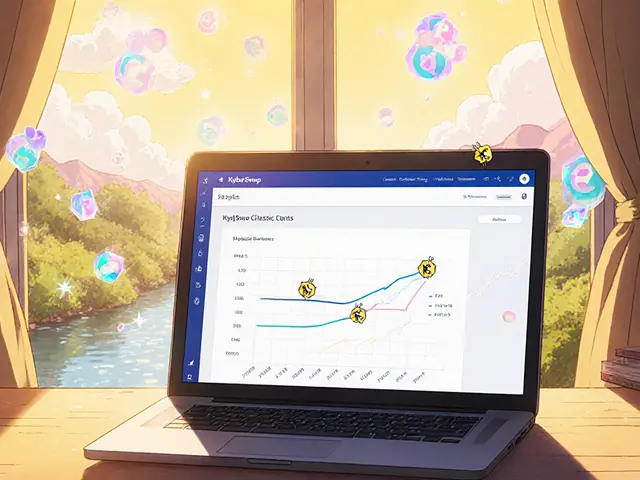20
Social Tokens and Creator Rewards: How Web3 Empowers Creators

Social Token Launch Cost Calculator
Token Launch Calculator
Blockchain Comparison
Ethereum
ERC-20
Transaction Cost: $1.50-$5.00
Speed: 12-15 seconds
Polygon
ERC-20 (Layer-2)
Transaction Cost: $0.0001-$0.01
Speed: 2-5 seconds
Solana
SPL Token
Transaction Cost: $0.00001
Speed: 0.5-2 seconds
Estimated Costs
Total setup cost: $0.00
Monthly operational cost: $0.00
Annual savings vs Ethereum: $0.00
Pro Tip: Successful tokens require clear utility beyond just financial value. Consider adding token-gated content or governance features.
Quick Takeaways
- Social tokens let creators monetize directly, bypassing platform fees.
- Token‑gated communities boost fan engagement by up to 50%.
- Ethereum, Polygon and Solana are the main blockchains for creator tokens.
- Regulatory risk remains high; treat tokens as potential securities.
- Successful launches need clear utility, education, and consistent content.
When you hear the term social tokens, picture a crypto‑style coin that belongs to a creator, not a country. Social token is a fungible digital asset issued on a blockchain that grants fans ownership, access, or governance rights tied to a creator’s brand. The idea flips the old model-where platforms take a cut of ad revenue-into a direct economic relationship between creator and audience.
Why Creators Are Turning to Social Tokens
Traditional monetization methods-ads, sponsorships, subscriptions-rely on third‑party platforms that control payment processing, data, and sometimes the creative direction. Social tokens solve three pain points:
- Revenue diversification: Creators can sell tokens, earn royalties on secondary sales, and unlock new income streams like token‑gated events.
- Community ownership: Fans become stakeholders; their tokens appreciate if the creator’s brand grows, turning passive followers into active investors.
- Programmable utility: Smart contracts can automate access to Discord channels, voting on content topics, or exclusive merchandise.
Data from a 2023 creator survey shows that 78% of creators with over 50,000 followers successfully launch a token, while only 22% of those with fewer than 10,000 followers do. The gap isn’t just audience size; it’s the ability to deliver real utility that keeps a token’s value stable.
How Social Tokens Work Under the Hood
Technically, a social token is a fungible token-usually an ERC‑20 on Ethereum or an SPL token on Solana. The token contract defines supply, transfer rules, and any special functions like "grant access if balance ≥ 100". Here’s a quick breakdown of the three major blockchains used today:
| Blockchain | Standard | Typical Transaction Cost | Speed (seconds) | Best For |
|---|---|---|---|---|
| Ethereum | ERC‑20 | $1.50‑$5.00 (gas) | 12‑15 | High‑value, large‑scale launches |
| Polygon | ERC‑20 (Layer‑2) | <$0.01 | 2‑3 | Low‑fee, fast‑gating |
| Solana | SPL | <$0.00025 | 0.5‑1 | Mass‑distribution, micro‑transactions |
Choosing the right chain balances cost against audience familiarity. Many creators start on Polygon because fans can purchase with a credit card via integrated checkout, then move to Ethereum for high‑profile drops.
Designing Tokenomics That Actually Work
Tokenomics is the blueprint: total supply, distribution schedule, and utility tiers. A common pattern looks like this:
- Initial sale: 30% of tokens sold to fans at a fixed price.
- Community reserve: 40% kept by the creator for future giveaways or collaborations.
- Team & advisory: 10% locked for 12‑month vesting.
- Liquidity pool: 20% paired with a stablecoin on a DEX for price stability.
Utility tiers often follow a "gate‑by‑balance" model: 100+ tokens unlock a private Discord, 500+ grant voting rights on upcoming video topics, 1,000+ give access to a monthly live AMA. Tokenminds reported that projects with clear tiered rewards retain 65% more value after six months compared to flat‑access tokens.
Platform Choices: Rally, Roll, and Emerging Options
Building a token from scratch requires smart‑contract knowledge. Most creators opt for a platform that handles wallet creation, token launch, and community tools. Below is a snapshot of the three biggest players as of 2025:
| Platform | Blockchain Support | Fees | Built‑in Utilities | Verification |
|---|---|---|---|---|
| Rally | Ethereum, Polygon | 1.5% of sales + network fees | Rally Pay fiat conversion, token‑gated Discord, merch shop | Optional identity check |
| Roll | Ethereum, Solana | $29/month subscription + 0.5% sales fee | Roll Verified, voting modules, NFT bundles | Mandatory KYC for verified creators |
| Fyooz | Polygon, Binance Smart Chain | 2% of sales | Live‑stream integration, tip‑jar, analytics dashboard | Community‑voted verification |
Rally’s recent "Rally Pay" feature lets fans convert tokens to fiat without leaving the app, addressing the 78% of users who complained about exchange friction. Roll’s "Verified" program cut scam launches by 63% in the first month after rollout, according to the platform’s own metrics.
Real‑World Success Stories
DJ Steve Aoki’s $AOKI token sold $1 million in 24 hours, demonstrating what a high‑profile creator can achieve with a well‑timed drop. More modest creators have also thrived: fitness influencer Austin Rief raised $150 k for his community token and kept 90% of its initial value after six months by publishing 12 tutorial videos before launch. Valeria’s $VAL token grew from 500 members to 15,000 in 18 months by delivering weekly live sessions, proving that consistent utility beats hype.
Risks and Regulatory Landscape
Social tokens sit in a gray area under securities law. The SEC’s 2022 warning letters flagged 17 creators for potentially offering unregistered securities. The Howey Test-used to determine if an asset is a security-looks at investment of money, expectation of profits, and reliance on the creator’s efforts. If a token promises profit from the creator’s future success, regulators may classify it as a security.
Beyond legal risk, creators must manage:
- Volatility: Average price swings of 40‑60% in the first month can scare fans.
- Tax compliance: In many jurisdictions, token sales are treated as income, and secondary market gains are capital gains.
- Technical barriers: 78% of surveyed creators needed 40‑60 hours of onboarding to launch effectively.
Mitigation strategies include using stable‑coin‑backed liquidity pools, clear legal disclosures, and partnering with platforms that enforce KYC and utility roadmaps.

Step‑by‑Step Guide to Launch Your First Social Token
- Set up a wallet: Download MetaMask (Ethereum/Polygon) or Phantom (Solana). Secure your seed phrase.
- Choose a platform: Compare Rally, Roll, and Fyooz based on your audience’s preferred blockchain.
- Design tokenomics: Decide total supply, price, and tiered rewards. Keep utility concrete-e.g., "500 tokens = monthly video drop."
- Create educational content: Record a 5‑minute explainer video, write a FAQ, and host a live AMA before launch.
- Launch the token sale: Set a date, promote via Discord, Twitter, and email. Use platform‑provided checkout to allow credit‑card purchases.
- Deliver promised benefits: Activate token‑gated channels, run polls, and schedule regular content.
- Monitor & iterate: Track sales, community sentiment, and price stability. Adjust rewards or add new utilities after 30 days.
The whole process typically consumes 70‑90 hours upfront, then about 5‑10 hours per week for community management.
Best Practices for Sustainable Creator Rewards
- Start small: A modest supply (e.g., 10,000 tokens) makes scarcity feel real without overwhelming new fans.
- Be transparent: Publish a token‑omics sheet and update it quarterly.
- Tie rewards to content cadence: Fans lose interest if you promise weekly drops but deliver monthly.
- Leverage token‑gated merch: Physical products linked to token ownership boost perceived value.
- Engage early adopters: Offer them a “founder badge” or extra voting power to seed community advocacy.
Future Outlook: Where Social Tokens Are Heading
Industry forecasts predict the creator‑token market will hit $8.5 billion by 2025, a 67% CAGR from 2023. Key trends include:
- Cross‑platform integration: Twitter’s beta "Tokens for Creators" lets users tip and unlock content without leaving the feed.
- Real‑world utility: By 2025, 60% of top launches will bundle physical merch or event tickets.
- Regulatory compliance tools: Platforms are adding automated KYC and token‑sale reporting to reduce SEC scrutiny.
- Token‑gated multi‑creator DAOs: Projects like Friends With Benefits show that a shared token can fund a whole ecosystem of creators, not just one.
If you’re a creator with a dedicated fan base, now is the time to experiment. Start with a low‑fee platform, deliver real utility, and keep an eye on the evolving legal landscape.
Do I need a crypto background to launch a social token?
No. Platforms like Rally and Fyooz handle the smart‑contract side. Your main job is to understand wallet basics and design clear rewards.
How are token sales taxed?
In most jurisdictions, the initial sale is ordinary income, while secondary‑market gains are capital gains. Consult a tax professional for specifics.
What blockchain should I pick for my audience?
If your fans are crypto‑savvy, Ethereum offers maximum exposure. For low‑fee, fast access, Polygon or Solana are better choices.
Can social tokens be considered securities?
Potentially, yes. If you promise profit from your future success, regulators may apply the Howey Test. Adding clear utility and avoiding pure speculation reduces risk.
What are the biggest pitfalls to avoid?
Overpromising utility, ignoring tax compliance, and launching without a solid community education plan are the three most common failures.








Jenna Em
October 20, 2025 AT 09:33Ever wonder who's really pulling the strings when creators start minting their own coins?
The illusion of freedom might just be a new leash for the data overlords.
Stephen Rees
October 21, 2025 AT 02:13It's a textbook example of the elite's cash‑grab.
Katheline Coleman
October 21, 2025 AT 18:53Allow me to delineate the salient considerations regarding social tokens within the contemporary creator economy.
First, the tokenization of personal brand equity constitutes a novel form of intangible asset that, unlike traditional royalties, is inherently programmable.
Second, this programmable nature enables creators to embed conditional access rights directly into smart contracts, thereby reducing reliance on third‑party platforms.
Third, the economic incentive structure aligns the interests of creator and fan, as both parties benefit from appreciation of the token's market value.
Fourth, regulatory ambiguity persists; in many jurisdictions, such tokens may be adjudicated as securities, imposing compliance obligations.
Fifth, the choice of blockchain bears significant implications for transaction costs, latency, and environmental impact.
Sixth, Ethereum offers robust security but higher gas fees, whereas Layer‑2 solutions such as Polygon mitigate cost at the expense of decentralization.
Seventh, successful token launches are predicated upon clear utility-whether access to exclusive content, governance participation, or community rewards.
Eighth, education of the fan base is paramount; without a clear onboarding pathway, token adoption stagnates.
Ninth, token‑gated communities have demonstrated measurable engagement lifts, often exceeding fifty percent relative to open forums.
Tenth, secondary market royalties provide a perpetual revenue stream for creators, a feature absent in conventional subscription models.
Eleventh, the psychological effect of ownership can engender heightened loyalty, yet it may also introduce speculative volatility.
Twelfth, creators must remain vigilant against market manipulation and pump‑and‑dump schemes that can erode trust.
Thirteenth, diversifying across multiple blockchain ecosystems can hedge against network congestion and regulatory shifts.
Finally, the long‑term sustainability of social tokens will depend on their integration into broader digital ecosystems, rather than existing as isolated curiosities.
Amy Kember
October 22, 2025 AT 11:33Token hype is just marketing fluff, no real value.
Evan Holmes
October 23, 2025 AT 04:13Looks like another gimmick to me.
Isabelle Filion
October 23, 2025 AT 20:53Ah, the blockchain saviours have arrived, promising to elevate the cultural sphere with tokenized virtue-how delightfully naïve.
Nikhil Chakravarthi Darapu
October 24, 2025 AT 13:33Our country shouldn't be selling souls to foreign chains; keep it home.
Lindsey Bird
October 25, 2025 AT 06:13OMG this is the future!!! My heart is racing!!!